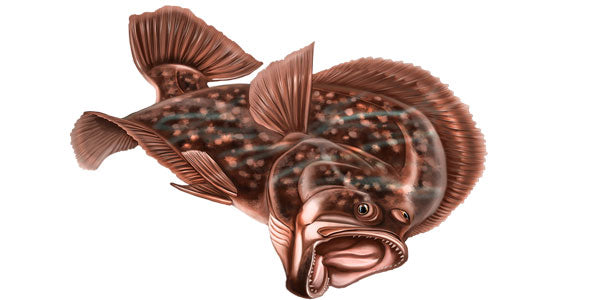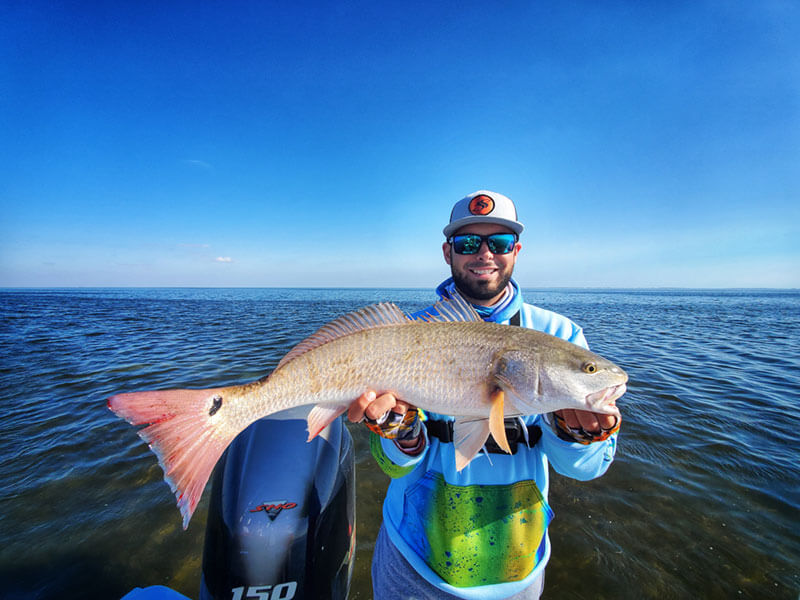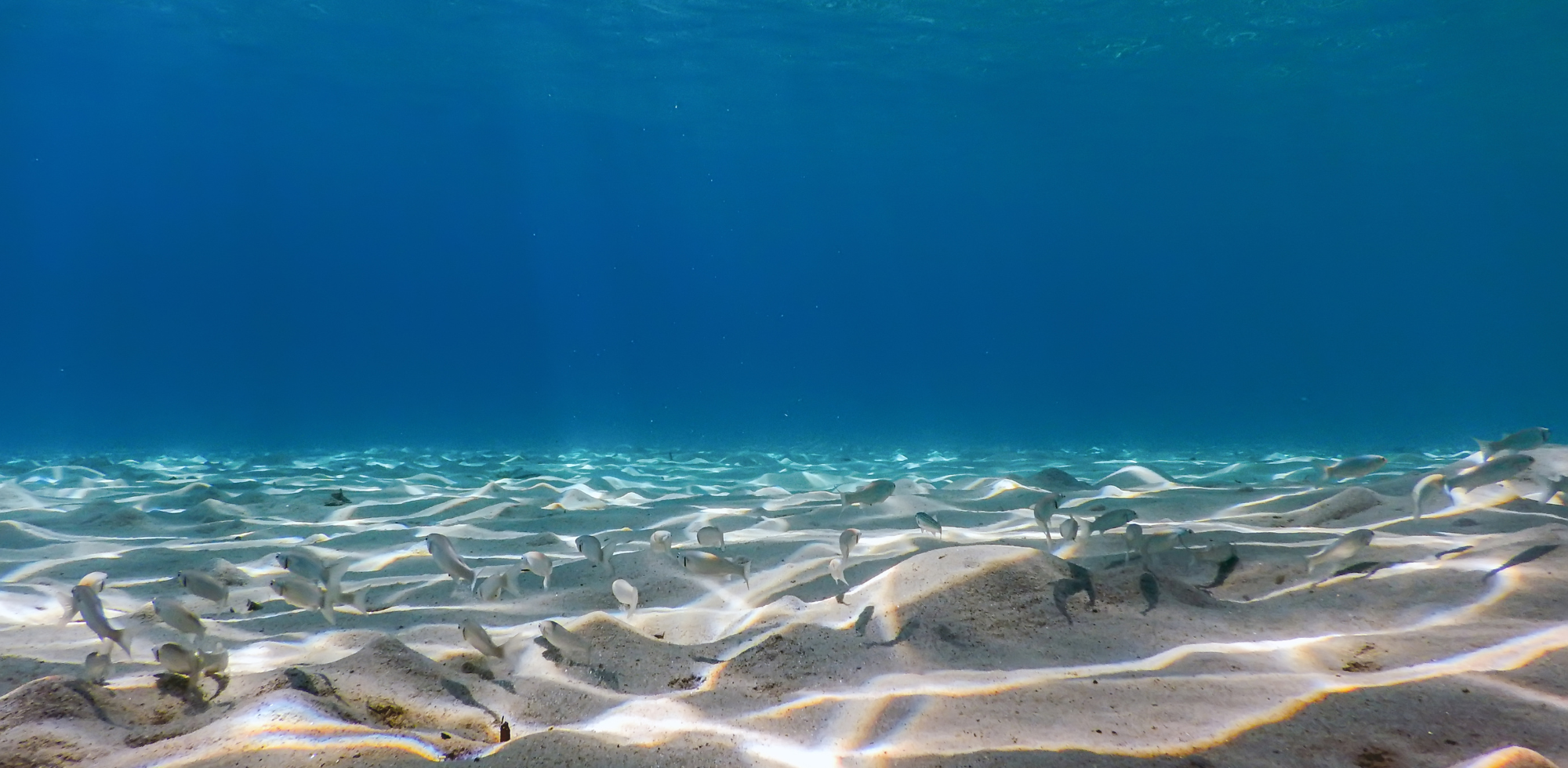
Peacock Bass Appearance
Peacock looks somewhat similar to largemouth in shape but is drastically contrasting via the color and pattern. Peacock bass is typically yellow/greenish with three large vertical black bars that run vertically down the sides. Peacocks also have a very distinctive black spot with a yellow hallow that circles the area. In many instances, you will catch a peacock with a vivid red eye. They indeed are a remarkable specimen.
Where to Catch
As stated earlier, the canals and ponds in & around Miami, Ft. Lauderdale & Palm Beach hold plenty of butterflies & speckled peacock bass. There are several areas specifically known as peacock hot spots, but almost anywhere you can cast a line is possible. A growing number of anglers choose to slip a kayak into calm waters and paddle along, tossing a lure in likely hot spots. Others walk the shoreline and sight fish, throwing a lure or bait to those they see in the shallows. In either case, you want to seek out shallows where they establish beds for breeding or structure where they will be ambushing prey. Experience has shown that although they are not a real bass, they often live side by side with the native largemouth - docks, bridge pilings, retaining walls, and even bends in the canal are all places you will want to explore.

Catching peacock bass in Florida canals
Peacock Bass Gear
Fishing for peacock bass does not require any specialized gear. If you have ever fished for largemouth, you probably have everything you need to land and peacock.
Rod/reel – a quality medium fast-spinning outfit in the 6' to 7' range will do the trick. If using live bait, opt for a medium action set up, bumping up to a fast action if using lures.
Line: 15-20 lb braid. A 20-30lb clear fluorocarbon leader will work just fine.
Bait: golden shiners are the go-to local live bait and are available at most area bait shops, or you can also catch bait locally, including multiple species of panfish. Regardless of which you select, make sure you keep it alive and fresh as peacock bass are hunter predators and prefer active dinners. The preferred way to catch golden shiners is by castnet. Be sure to watch where you cast because there is quite a bit of garbage in south Florida's random canals.
Lures: you do not need a lot of artificials, but it is essential to have an assortment that will allow you to target peacocks in various water depths. Surface poppers, propeller lures, sinking, suspending, and floating lures can all be productive depending on the time of day/year and water conditions. Be sure to have multiple color patterns as well, especially those that resemble shiners or panfish. I love a little white bucktail or a Down South with a 1/4 ounce Mission Fishin jig head.
Misc.: split shot, bobbers, and corks
Hook: 1/0 or 2/0 circle hooks. The hook size will depend on the bait size.
How to Catch Peacock Bass
Once you have your gear ready and have found likely water, it is time to start catching fish. When it comes to Florida peacock bass, you have a few different options depending on the type of water and whether you are using a lure or live bait.
- Freelining – there are no more productive means of landing big peacocks on live bait than simply freelining. Tie the leader directly to mainline using a Uni to Uni knot, run the leader to a 1/0 to 2/0 hook without any hardware, hook the baitfish. You may need to add a small split shot in the canals to slow the bait when the current is fast.
- Sight Fishing - walking the edges of a canal or park pond and locating fish in the shallow areas is one of the more popular means of catching peacocks because it works and keeps the process as simple as possible. It's also exhilarating watching an aggressive pea pursue its food. You may also find them on beds; be sure to handle with care and get them back in the water quickly, especially when bed fishing.
- Casting- Finding fish in deeper water work best when working lures across the bottom. Working a lure with a lot of action will entice almost any peacock in the area to check out the commotion. Depending on where you are, the water can range from a few inches to 8-10 ft in depth. Be prepared to fish anywhere the fish may be.
Bobber or cork – tossing out your favorite live bait suspended under a bobber or cork can produce big fish, and the excitement experienced when your float disappears, and the line starts a run.
Fishing Tips
Once you hook a fish, be prepared for other peacocks to be drawn to the area. It is not uncommon for an angler to retrieve one fish only to find even bigger ones were following it to shore. If this happens, be prepared to target these camp followers as they are often more prominent than the potential meal you already have on the line.
When fishing in urban areas, map apps such as Google Maps will help you identify hidden waters and identify the owner.
You can catch peacock bass during the day or night, but mid-day trips tend to be the most productive in my experience, especially when targeting dock or shaded structure.
Extra Peacock Bass Fishing Tips
Although most of the peacock bass varieties are 10-14 inches in size, the anglers take pride in fish that weigh over three pounds. Now, you need to keep in mind that these are not easy varieties to catch. They are the real bruisers. They are aggressive and not ready to give in before a substantial fight. To attract them, you need to excite them with their favorite food offerings. Only then these wild types of ambush predators will put on a feeding show.
#1. Fly Fishing - Peacock bass are intense fighters, be prepared to get some burns on your fingers. These burns happen when you strip your flies fast. However, one good thing about these fishes is that they are not picky. Anything shiny will get their attention.
#2. Fishing Canals - When you are angling in man-made canals, do not forget that they are frequently pretty deep. So use something that carries a little bit of weight. You can use Clouser minnows, deceivers, or anything that will readily sink in the strike zone. To ensure that they fall, you can always use a sink tip or a sinking fly line. If you are tying your lines, choose anything that comes with dumbbell eyes and looks like a fish. Peacock bass will be allured to your bait as long as you move it fast. The faster you strip the line, the more aggressive they become.

#3. Fishing Structure - One of the most effective means of ensuring a high probability of potential catch, focus on structures such as bridges or pipes. The peacock bass leverages natural and artificial systems for cover. It makes ambushing their prey easier. Try to throw multiple casts around these structures.
#4. Watch Out for Creatures with Teeth - While catching a peacock bass is your ultimate aim, do not be casual about other things happening in your surroundings. Ensure wearing shoes whenever around the canals. Snakes and crocs hang around these canals. Also, be prepared for any other obstacle that might come your way. While attempting for a Peacock bass, you may end up catching varieties of cichlids, tilapia, snakeheads, largemouth, Arowana, or snook and tarpon.
#5. Feeding Frenzy - Peacock bass usually moves around in small schools in search of baitfish. However, there are times when they suddenly burst into a feeding frenzy. Try to bring in your lure or fly in front of the feeding fish as quickly as you can. The sooner you manage to bring it in in front of them; the higher are the chances of a hookup. It is due to the nature of the peacock bass. They are of a greedy and competitive species.
#6. Don't Set the Hook too Soon - Although you need to act fast, it is also important to remember that you should not set the hook too quickly. Peacock bass tends to slap at the lure. They come back to grab the bait on the second pass firmly. Therefore, please don't set the hook on strike itself. Keep a watch. If you can't see the plug, popper, or the fly after about a second, you drop your rod tip to set the hook with your stripping hand. In case the peacock bass loses interest to come back for a second time, cast a diving lure or fly. This tactic may get you the peacock bass interested again.
#7. Slow Down & Enjoy Your Catch - Expert anglers suggest never to try and "horse" a large-sized peacock bass. Probably what they imply is not to underestimate a peacock bass's power. If a large-sized peacock bass is approaching a structure, apply side pressure to the rod so that you manage to steer the fish in another direction. Also, do not crank your drag down too tight. It may result in the peacock bass entirely snapping the line or pulling it off. Despite your attempts to steer the fish away from a structure, it manages to go under a cover, do not give up. Allow a little slack and then wait for the boat to spook the fish out of its hiding place. It's also wrong to assume that a fish near the boat is ready to give up. Keep a high rod tip and a loose drag to manage the catch in its last-minute runs.
#8. Lure Color Matters - When deciding on a lure a fly, remember that the color or shade should cater to the ambient light conditions' needs. The usual practice is to use a light-colored fly if it is bright outside. In low light conditions, darker shades prove more effective.

#9. Flies Win - Among the best offerings for a peacock bass are the topwater plugs, crankbaits, and spoons. Do not use plastic worms. Peacock basses are repulsive to plastic worms. Large streamers are good among the flies, especially marabou. Marabou seems to be particularly appealing to the peacock bass, and can you strip them quickly.
The Best Bait
Choosing the correct bait is essential to catch large peacock bass, as necessary it is to have the proper strategy. We have already touched upon the subject of baits. In the following segments, we will elaborate further on the topic.
When it comes to deploying live baits, a golden shiner is the best. Plastic baits do not typically work well for Peacock bass, but a plastic worm works excellent for largemouth bass. If you are fishing in a Florida lake, you can use a Texas or Carolina-rigged worm. Especially in lakes that have a heavy plat cover. Worms are available in a wide variety of colors as well as scents. If you plan to fish for an extended period, be sure to have both light and dark-colored options. The ambient-light may change during your expedition, and you may need to use both kinds.
The weight of the worms also varies. It is better to keep several sizes rather than a particular type. The weight may vary from one-eighth of an ounce to an ounce. The purple metalflake worms or red shad worms that come with twirly-tails are popular but effective options.
Another efficient variety of baits are the jerk worms. These baits work well with active bass and waters that have dense underground vegetation. Rapidly jig over the foliage. Peacock bass and largemouth hit these baits hard, and therefore, you need to have an instant hookset.
During spring, spinnerbaits work well. With spinnerbaits, you need to fish slowly around the drop-offs and cover. If a slow retrieve does not work, you may also attempt to retrieve it rapidly. It's called Buzzing, and it makes the blades of the bait ripple the surface.
For crankbaits, a straight retrieve works better. These are baits that typically imitate a baitfish or crayfish. How deep the lure would dive depends on the design of the plastic lip. Anglers are free to adjust their baits depending on how deep a waterbody they are fishing in. Popular color varieties of crankbaits include white, shad, firetiger, or crayfish.
You can also use topwater baits if you prefer to see the strike. These are baits that imitate a wounded baitfish. Most of the topwater varieties make noise. Their erratic retrieve often antagonizes the bass into striking. The topwater lures work the best during the morning or late afternoon.
Conclusion
The most important thing to remember in Peacock Bass fishing is that these fishes are robust; they strike harder and give a spirited fight. Peacock bass remains active during the day but can be caught morning and early evening. Both lures and flies work well. But, as far as plastic baits are concerned, peacock bass does not prefer them.
Minnow imitating crankbaits or the topwater lures proves useful. Topwater lures can be with and without propellers. Along with these, you can use a variety of jigs fished on casting or spinning tackle for artificial baits. To increase the probability of you getting more strikes, it is recommended to use baits that are less than three inches in length. However, if you are looking for huge ones, you can go up to 5-inch long baits. Since peacock bass strikes on flies, too, you can use various flies that include Dahlberg divers, deceivers, Clousers, epoxy minnows, zonkers, and poppers.
The peacock bass loves the warm water, and the freshwater bodies of the world have them aplenty. If you have fished other types of bass already and feel confident about peacock bass as well, you must remember that while there are many similarities, there are some differences too. These differences may relate to size, habitat, or bait preference. Therefore, it's better to know the peculiarities of the Peacock bass beforehand. It is always preferred to catch and release, but they are lovely to eat as well.
Guided Peacock Trip
Are you looking for a guided peacock trip? Capt. Kevin Cannon is a licensed fishing guide who knows how to put peacock bass and clown knife fish in the boat. He is based out of South Florida also, so there is no need to book expensive trips out of the country unless you want to, of course. You can reach him here:
Phone: 561-723-4694
Here is some incredible video footage catching Peacock bass in South Florida, be sure to subscribe to our YouTube channel for more great video content:






2 comments
Mark Dunstan
Great tips for catching Peacocks.
Great tips for catching Peacocks.
Christopher
I have always wanted to catch a peacock bass! Am these tips are EXACTLY what someone would need to do so. They are by far the best fighting small fish. They are fierce!!!
I have always wanted to catch a peacock bass! Am these tips are EXACTLY what someone would need to do so. They are by far the best fighting small fish. They are fierce!!!